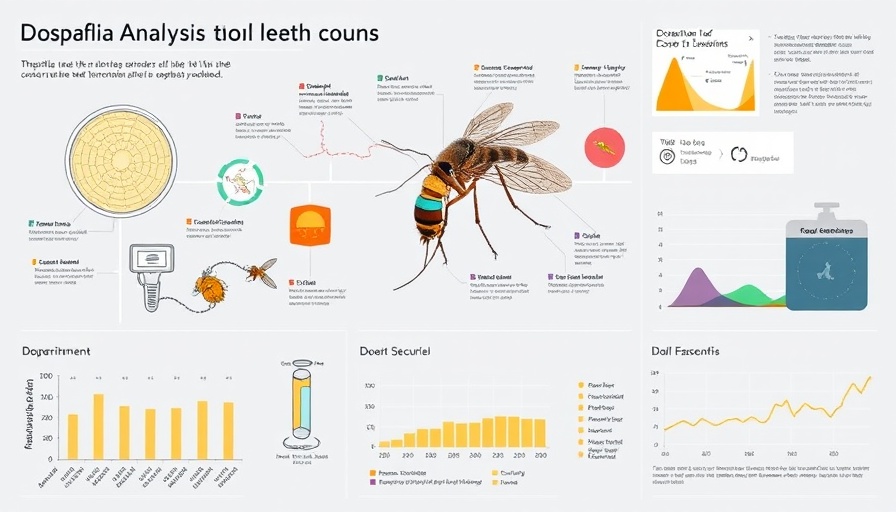
Revolutionizing Neuroscience: The Drosophila Analysis Tool
For decades, Drosophila melanogaster, commonly known as the fruit fly, has been a cornerstone in genetics and neuroscience research. Now, a groundbreaking analysis tool has emerged, allowing researchers in resource-limited settings to delve deeper into the root of complex social behaviors such as aggression and courtship — a leap that holds potential for both scientific understanding and community health.
Empowering Low-Income Researchers
The recently published study in eLife unveils a cost-effective and open-source method that simplifies the vast world of analyzing fruit fly behaviors. By utilizing readily available laboratory equipment combined with innovative behavior classifiers, the team made strides in automating the analysis process. Lead author Sai Prathap Yadav emphasizes that this tool is particularly beneficial for researchers in low-income settings, providing them a unique opportunity to investigate neural underpinnings without the need for significant financial investment.
Understanding Social Behaviors: A Deeper Look
Drosophila serves as a prime model for untangling the genetic and neuronal complexities behind social behaviors. This new tool specifically aids in quantifying male aggression through automated analysis, moving away from the traditional, labor-intensive method of human observation. This is crucial because behaviors such as chasing, lunging, and courtship displays can now be assessed at high speeds, allowing for large-scale studies that were previously impractical.
The DANCE Method: A Game Changer
The tool’s development centers around a method called DANCE (Drosophila Aggression and Courtship Evaluation) that operates on supervised learning protocols. Unlike existing software, which often misclassifies or mis-scores behaviors, DANCE uses expert-analyzed datasets to train its algorithms. This accuracy enhances confidence in the data collected and enables researchers to focus on larger questions about social behavior.
Broader Implications for Health and Wellness
As researchers explore the interplay between genetics and social behavior in Drosophila, the implications can extend far beyond the flies themselves. Understanding aggression and social interactions can provide insights relevant to human health and wellness. Improved behavioral analysis can lead to better therapies and interventions for conditions characterized by social and behavioral challenges. Furthermore, the accessibility of such tools stands to encourage a new generation of scientists from diverse backgrounds to contribute meaningfully to global scientific knowledge.
Future Trends and Opportunities in Neuroscience
This innovative tool is set against a backdrop of changing landscapes in neuroscience, particularly in areas where funding is sparse. As basic biomedical research increasingly aims to incorporate findings into real-world applications, tools like DANCE will likely pave the way for greater collaboration across institutions, sharing insights and findings without the burden of financial barriers. An emphasis on health and wellness remains crucial as we consider how to use these findings to foster community health initiatives that can benefit from increased understanding of social behaviors.
Challenges and Counterarguments: The Future of Drosophila Research
Despite the transformative potential of the DANCE method, challenges remain. Some experts argue that reliance on automated tools might overlook the nuanced understandings that come from traditional observational methods. It's crucial to balance technological advantages with the depth of qualitative analysis. Furthermore, the proprietary nature of many existing tools poses hurdles for accessibility, forcing researchers without access to these resources to rely on simplistic models or outdated methods.
Conclusion: Join the Dialogue on Neuroscience Innovations
This new Drosophila analysis tool represents not just a step forward in behavioral research but serves as a catalyst for broader discussion about the future of neuroscience, particularly in resource-limited settings. Enthusiasts and experts alike should engage with ongoing dialogues around these innovations. Together, we can explore how these developments facilitate advancements in health and wellness — making a positive impact on broader communities.
 Add Row
Add Row  Add
Add 




 Add Row
Add Row  Add
Add 


Write A Comment